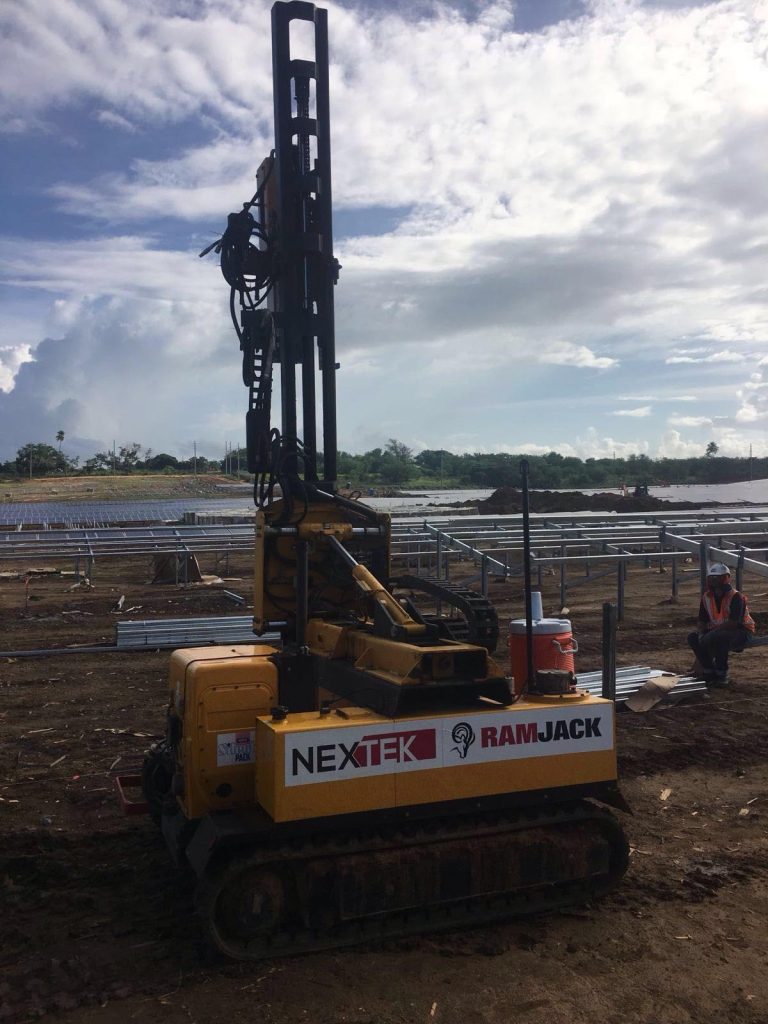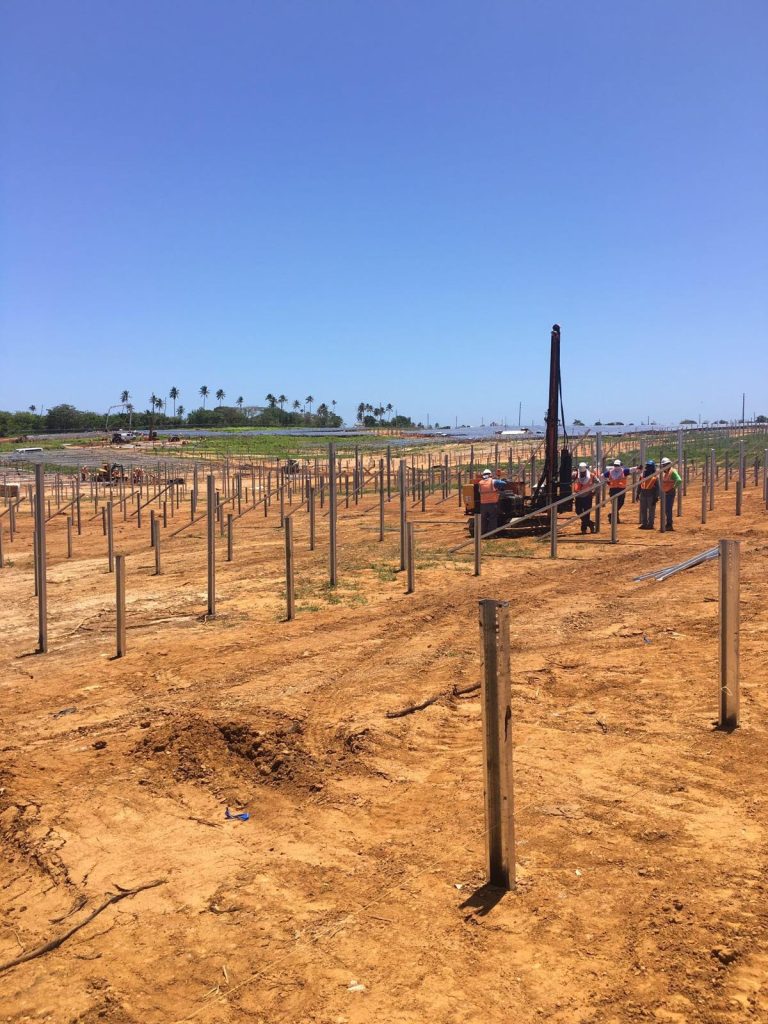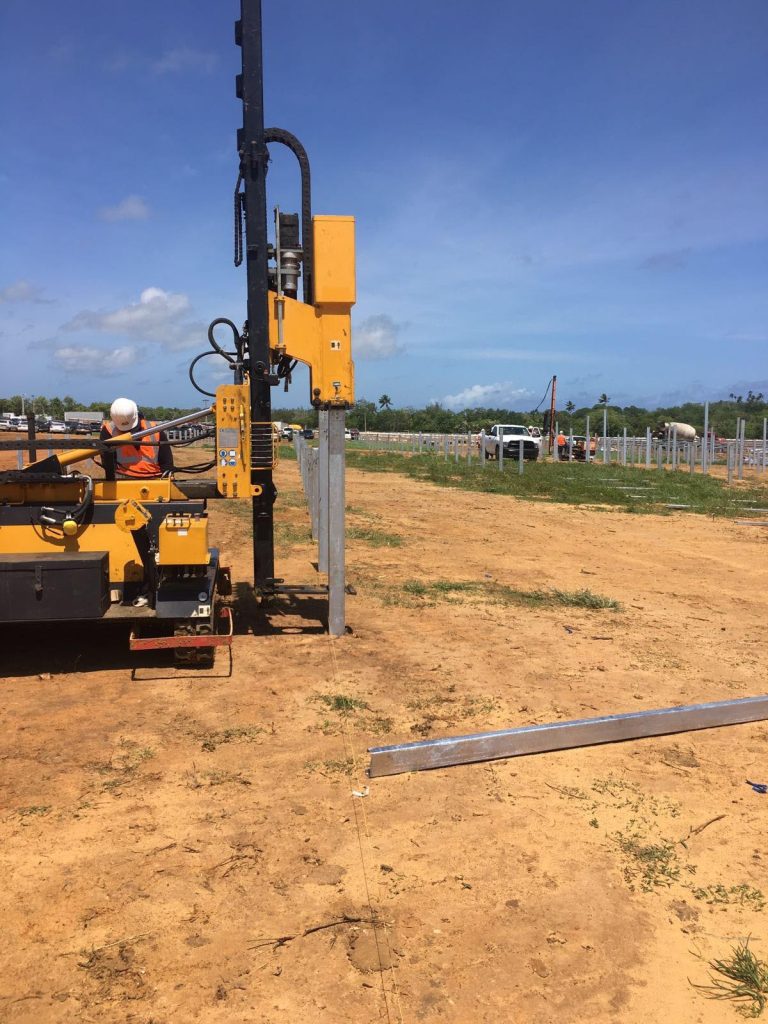
Optimizing Quality, Code Compliance and Cost effectiveness present considerable challenges to Solar Field Developers, Owners and Engineers. Pre designed or Pre packaged racking systems have solved many of the internal engineering of the rack structure or table. Foundations on the other hand is one of the hardest challenges and where considerable uncertainty exists.
Simplify the foundation and a hurricane or tornado or even a gust of wind will cause havoc in a solar field. Over-design a foundation and you will have a bomb proof solar field with unnecessary costs.
Providing a cost effective foundation that resists the expected (or code compliant) loads while optimizing the cost is a desirable tradeoff. With respect to all geotechnical engineers even with PhD’s. Computing the depth of installation for a solar field foundation with certainty is not certain. In part that is why The factors of safety exists to begin with. Sadly, foundations typically require a Factor of Safety of 3. That means that the computed capacity is triple the expected demand or requirement of the most critical load combination. A way to lower this contingency or factor of safety is by load testing.
A huge parenthesis here. Beware of structural demands computed with the LRFD or Load Resistance Factor Design. Foundation design is typically performed with “service “ loads. Service loads is a term that even I get confused sometimes. So beware. Foundation loadings shall be adjusted from LRFD to service loads in order to avoid over design.
When the load requirements are known. And the parcel or land has been selected, the best way to optimize the foundation costs is by actual testing of the piles. But there is a caveat. When doing Pile Testing we are doing a lot more than testing the piles and the land. We are testing the machine capabilities as well as the installation requirements.
There is a mistake happening every day in the solar field foundations industry. When testing the Piles, if we only test the pile performance at certain depths of installation we correlate the pile or post performance only to the characteristics of the soil where the test was made.
Experience has taught us with concrete driven piles that establishing a driving criteria is more important than installation depth. The same happens with solar field posts. Ignoring the energy needed to install the pile and only observing performance of the pile when installed at certain depth denies the geological reality that soils are seldom uniform throughout the landscape.
The mistaken depth criteria combined with the inevitable soil variances challenge the installation team. It also may provide an underperforming foundation or a time consuming quest for the pile driver team to keep pounding a pile for an hour losing valuable time.
Considering all this, it is our opinion that pile testing for solar fields shall comprise of the following:
- Obtaining the structural requirements to the foundation.
- Establishing the structural section that complies with the tension and compression requirements..
- Determining the test quantity. A minimum of 3 locations is recommended for small projects and data corroborating. For larger projects 1% may be acceptable or even less. A 20,000 posts project would require 200 tests which may be an overkill.
- Determine the test locations by observing the geologic features of the land.
- Selecting an installation equipment that is representative of the local equipment availability considering the height capacity, die or post dimension capacity and driving energy.
- Perform preliminary installations to confirm that the section can be driven into the soil.
- If refusal is found then pre-drilling may be necessary. This adds some complexity to the testing but is consistent with the project needs.
- Obtaining a preliminary depth criteria by pull testing the initial sections.
- Performing the formal tests and driving criteria.
On the subject of post driving hammers for light gage sections it is extremely important to know that these are not structural steel pounders. These hammers use nitrogen in similar fashion to paving breakers. Low energy with high frequency. There is no way to count the pounds or impacts per feet.
There is little information correlating post driving energy to pull capacities. In fact, driving criteria for post driving machines should be different from concrete pile driving. The criteria shall be established as time per 6 inches for a X Joules hammer with Y efficiency or similar criteria.
Variables such as criteria when Pre drilling are also very important to determine. There are two major types of pre drilling. Pilot hole drilling, where the hole is smaller than the steel section to facilitate the driving with the post driving machine or pre drilling to install the section with concrete or cement grout. Both alternatives should be tested properly.
A proper testing program allows the developers, foundation engineers and foundation contractors to optimize the foundation costs while reducing the uncertainty and the related costs while assuring proper performance of the solar field racks structures.





